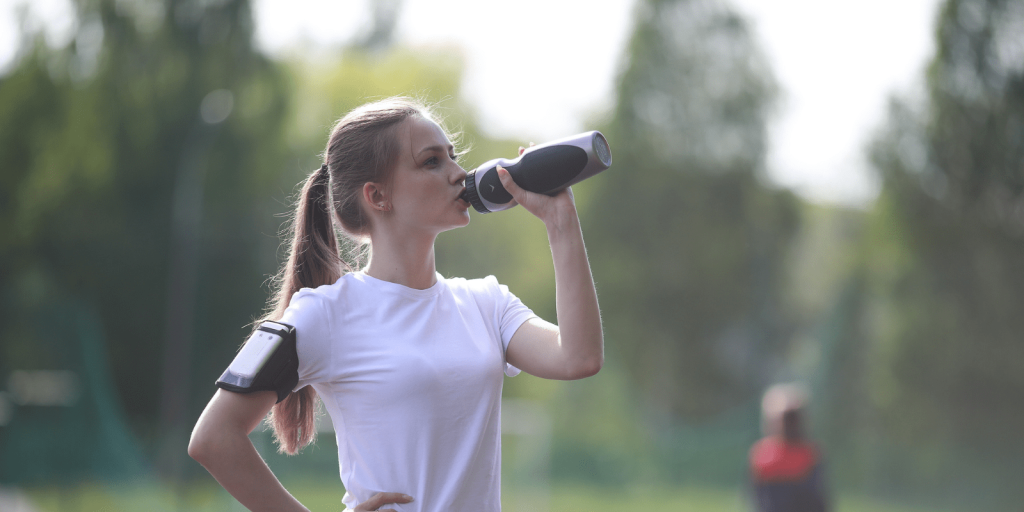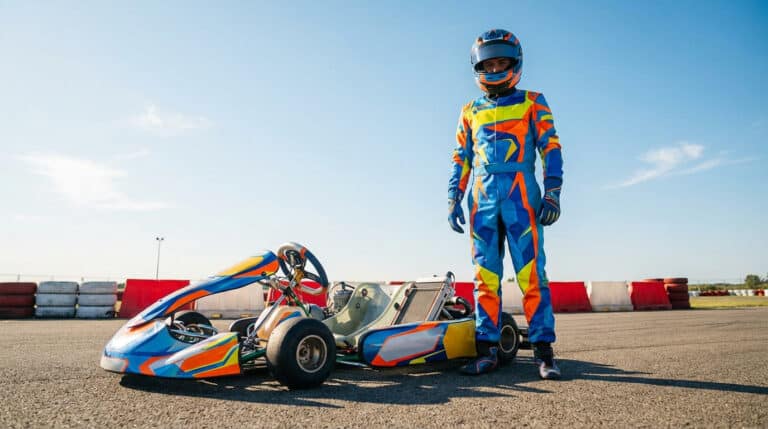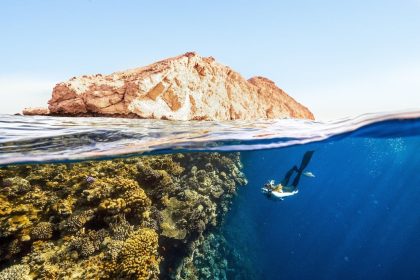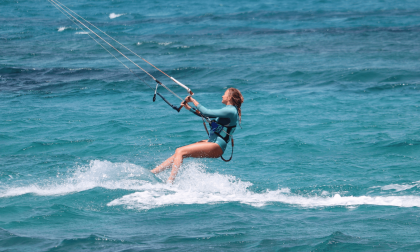The sports bottle: your hydration ally without compromise? No more disposable bottles, unmanageable weight, or uncontrollable leaks. This guide reveals how to choose the ideal bottle according to your activity — isothermal stainless steel for hikes, lightweight plastic for fitness, lightweight aluminium for cycling, or a collapsible silicone model for trail — combining performance, durability, and economy. Whether you’re looking for a leakproof model, an intuitive cap, or thermal insulation, explore the key criteria for optimal hydration. Reduce your ecological footprint while preserving your budget, with solutions adapted to demanding sports as well as everyday use.
Why is the sports bottle an essential piece of equipment?
You may not realise how much a sports bottle can transform your performance. Did you know that a 2% loss of your body weight in water can reduce your performance by 20%?
Hydration, the key to sporting performance
During effort, your body loses between 1 and 3 litres of water per hour. A bottle allows you to hydrate regularly, avoiding loss of concentration, cramps, and fatigue. Exercising every day requires increased vigilance: drinking every 5 to 10 minutes, even without thirst, is crucial. Ergonomic models, with spout or one-hand opening, make this routine easier.
A gesture for the planet and for your wallet
89 billion plastic bottles are sold annually worldwide. By opting for a reusable bottle, you avoid 300 to 700 pieces of waste per year. In addition, tap water costs €0.003/litre, compared with €0.20 to €0.60 for bottled water. A stainless-steel model, 100% recyclable, combines durability and long-term profitability.
A healthy habit beyond the field
A well-chosen bottle adapts to all contexts. Whether you’re at the office, at school or on the move, it encourages you to drink regularly. Studies show that 75% of the brain is made up of water: optimal hydration therefore improves concentration and reduces stress. Models with time markers or fruit infusers add a playful touch to maintain this healthy routine.
The different types of sports bottles: which material should you choose?
Stainless-steel bottle: robust and often isothermal
Stainless-steel bottles stand out for their exceptional durability. They resist shocks, scratches and daily wear, guaranteeing prolonged use.
Their isothermal double wall keeps drinks cold for up to 24 hours and hot for up to 12 hours, ideal for hikes or office days.
Hygienic and odourless, stainless steel retains neither bacteria nor flavours, while being 100% recyclable. However, their weight, often over 200 grams, can be a drawback for trail enthusiasts or long walks.
Plastic bottle: lightweight and versatile
Plastic, notably Tritan, is popular for its lightness (under 100 grams) and affordable price. BPA-, phthalate- and BPS-free, it offers an economical and safe alternative.
The varied designs suit all tastes, but beware: some surfaces can retain persistent odours if poorly cleaned. Less durable than stainless steel, plastic is perfectly suited to indoor sports or daily use.
Other materials: aluminium, glass and silicone
Aluminium combines lightness and recyclability, but requires an inner lining to avoid reactions with acidic drinks. Less expensive than stainless steel, it remains thermally fragile, struggling to keep temperature beyond 4 hours.
Borosilicate glass, meanwhile, preserves a neutral taste and aesthetics. Its transparency makes cleanliness checks easy, but its fragility calls for a protective sleeve. Less suited to shocks, it appeals for its impeccable hygiene.
Finally, collapsible silicone, a star in trail, compresses bulk when empty. Ultra-light and compact, it optimises space in a bag, though its limited capacity (250 ml on average) reserves it for specific uses.
Material comparison
| Material | Advantages | Disadvantages | Ideal for… |
|---|---|---|---|
| Stainless steel | Durable, isothermal, hygienic, no taste | Heavier, more expensive | Hiking, daily use, hot/cold drinks |
| Plastic (Tritan) | Lightweight, economical, varied designs | Odour retention, less durable | Fitness, indoor sports, daily use |
| Aluminium | Very light, recyclable | Inner lining needed, non-isothermal | Cycling, light hiking |
| Glass | Neutral taste, impeccable hygiene | Fragile, heavy | Office, yoga, home use |
| Silicone (collapsible) | Ultra-light, compactable | Limited capacity, less rigid | Trail, running, travel |
How to choose the ideal sports bottle for your activity?
Each sport imposes specific hydration requirements. A poorly adapted bottle can harm your performance. Discover the perfect models for your practice, prioritising practicality, durability and hygiene.
For indoor sports (fitness, weight training)
Opt for a large capacity (1 L to 2 L) to limit trips back and forth. “One-click” or screw caps ensure quick access to water between sets. Shakers with mixing ball, like those from Decathlon (PHOENIX 1 L model), are perfect for protein. Favour Tritan (BPA-free) or stainless steel for their resistance. Isothermal versions keep drinks cool for several hours, like QUECHUA stainless-steel bottles.
For running, trail and canicross
Soft flasks in BPA-free TPU, such as Salomon or Kiprun (Decathlon) models, weigh under 50 g and fit into hydration vests. Their bite or push-pull valve lets you drink without stopping. For canicross, a lightweight, ergonomic bottle is crucial. Discover equipment adapted to running with your dog, including leakproof models like Aonijie or Compressport bottles.
For cycling (road and MTB)
Bottles must fit standard bottle cages. Plastic models (such as SKS Germany 750 ml, compatible with all mounts) or isothermal stainless-steel ones (ELITE DEBOYO RACE 550 ml) allow one-hand drinking. The push-pull valve with dust cap protects the spout on MTB. Isothermal versions preserve freshness for 24 h, useful in summer. The SKS, lightweight (75 g), perfectly suits occasional cyclists.
For hiking and trekking
A robust isothermal stainless-steel bottle (at least 1 L) is essential. Models with integrated filter, like LifeStraw Go Series (10,000 L filtration), purify natural water for autonomy. Double-wall insulation keeps drinks fresh for 24 h or hot for 12 h. A handle or carabiner makes attaching to the pack easier. Activated-carbon filters improve water taste by removing chlorine, like those offered by Qwetch.
- Fitness/Weight training: Large capacity (1 L to 2 L), quick “one-click” opening, optional shaker.
- Running/Trail: Lightness (under 50 g), compact format (soft flask), ergonomic valve.
- Cycling: Bottle-cage compatibility, push-pull spout cap, thermal insulation.
- Hiking: Large capacity (1 L+), robustness (stainless steel or TPU), thermal insulation and integrated filter.
The technical criteria not to overlook for a perfect choice
Capacity: from 350 ml to over 2 litres
The ideal capacity depends on the duration and intensity of the activity. A short session (under an hour) requires 500 to 750 ml, while a hike needs at least 1 litre. In extreme conditions or on remote routes, choose 1.5 to 2.2 litres. Children or occasional use will opt for 350 to 500 ml. A runner in prolonged training will choose 1.5 L, versus 750 ml for an urban cyclist thanks to accessible water points. In high heat, intense effort or heavy sweating, a 1.5 L bottle avoids dehydration, while a mountain hiker will prefer an isothermal model to keep water cool.
Cap type: practicality and leakproofing first
- Screw cap: Leakproof and robust, ideal for transport. Requires two hands to open, suited to hiking. In BPA-free plastic, it resists drops and jolts.
- Sports cap: One-hand opening, perfect for cycling or running. Some models include anti-leak locking, but the spout can get dirty if poorly maintained.
- Straw cap: Practical without tilting the bottle, but limited flow. To be avoided for thick drinks. Models with extendable straw offer hygienic access.
- “One-click” cap: Intuitive one-press system, hygienic. Reduced flow, less suited to intense movements. Handy when driving or at the office.
The features that make the difference
Isothermal bottles (double-wall stainless steel) keep drinks cold for 24 h or hot for 12 h, an advantage outdoors. Fruit infusers flavour water without added sugars, some including removable compartments for teas or supplements. Time markers encourage regular drinking via hourly graduations, useful for meeting daily hydration goals. Models with handle or strap make transport easier in trail or MTB, while Tritan bottles combine lightness and durability. Finally, versions with silicone sleeve improve grip, even with gloves, and absorb shocks for intensive use.
Hygiene and maintenance: ensuring the longevity and safety of your bottle
Best practices for effective cleaning
To preserve hygiene and the lifespan of your bottle, regular cleaning is essential. After each use, rinse with hot water to remove residues and use a bottle brush to reach difficult areas, such as straws and seals. Hot water helps dissolve deposits and lightly disinfect the surface.
- Empty and rinse your bottle with hot water after each use.
- For a deep clean, use soapy water and a bottle brush, paying special attention to the neck and cap.
- Let the bottle dry completely in the open air, storing it open and upside down to avoid bad odours.
Dishwasher-safe bottles can go on the top rack with a mild detergent. For persistent odours, a mix of bicarbonate of soda or white vinegar is effective. Using a bottle brush allows you to scrub the corners where bacteria easily accumulate.
Health and material safety: what you need to know
Material safety is crucial to avoid health risks. Plastic bottles must be BPA-free, ensuring no harmful compounds migrate into the water. Food-grade stainless steel (FDA or LFGB certified) and glass, as inert alternatives, alter neither taste nor safety. Aluminium bottles require an inner coating to avoid direct contact between metal and drink, generally made with non-toxic polyamides.
How long to keep water in your bottle?
Water can be kept for 24 to 48 hours in a clean bottle. Beyond that, bacterial proliferation, encouraged by heat and light, makes the water unfit for consumption. Plastic bottles, being more porous, accelerate this phenomenon if poorly maintained. For optimal hygiene, replace the water daily, especially in summer or after intensive use. Store out of direct sunlight and watch for signs of contamination, such as a strange odour or taste, which could indicate bacteria.
Your sports bottle: much more than a simple accessory
Choosing a bottle adapted to your activity, material and features transforms your training. Good hydration prevents fatigue, improves your performance and protects your health. A stainless-steel model, for example, combines robustness and lightness, ideal for demanding hikes, while a leakproof aluminium bike bottle ensures quick access to water.
Avoid plastic waste and repeated expenses: investing in a durable bottle means saving in the long term while protecting the environment. The most practised sports in France require adapted solutions, whether for trail or indoor training, with ergonomic models for each discipline.
Whether you opt for an isothermal stainless-steel bottle, a lightweight BPA-free plastic model or a leakproof bike bottle, every detail counts. Runners favour lightweight plastic models, while hikers choose collapsible bottles to save space. Adopt an eco-responsible routine: your next sporting adventure deserves a reliable, practical companion adapted to your specific needs.
The sports bottle is much more than an accessory: it optimises hydration, saves money and protects the environment. By choosing one adapted to your practice, you’ll find an ideal companion for your activities, whether running, cycling or hiking in France.






